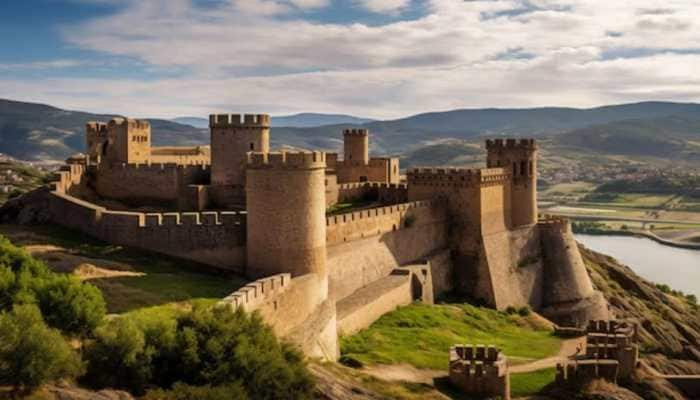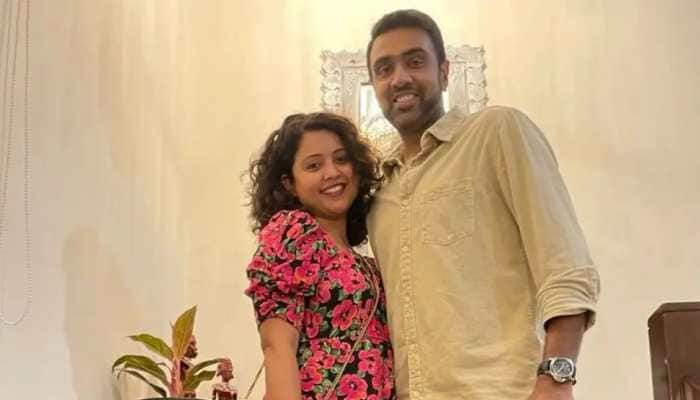INKredible India: The story of 1951-1952 Lok Sabha election - All you need to know
India's first-ever Lok Sabha election was an exercise in asserting the country's democratic credentials just a few years after independence and a year after the Constitution was adopted. With rampant poverty and illiteracy, it was also a massive organisational challenge quite unprecedented at the time anywhere in the world.
Trending Photos
) Photo courtesy: Lok Sabha
Photo courtesy: Lok Sabha A country still in the nascent stages of democracy, independent India rose up to elect her political leaders for the first time ever. It was the country’s first tryst with democracy and because the entire exercise was unprecedented, it also posed challenges aplenty.
For starters, there were no past elections in independent India to take lessons from. Then there was the big question of how to get 143 million people to come out and vote. The number itself made the first Lok Sabha election in the country the biggest election in the world at the time. That an estimated 85% of the population could not read and write further complicated matters.
Although far from perfect, the election itself was a cornerstone in democracy - not just in the country but the world over.
Status of states:
India in the year 1951 was vastly different from what the country is today. And this is true in terms of the political map as well. The States Reorganisation Act of 1956 was still five years away. What this meant was that in the year 1951, there was no union territory of Puducherry, no Andhra, and Bombay State had not seen its eventual split into Gujarat and Maharashtra yet.
After the country’s Constitution was adopted in India, the country had Part A states – Assam, Bihar, Bombay, Madhya Pradesh, Madras, Orissa, Punjab, Uttar Pradesh and West Bengal; Part B states – Hyderabad, Madhya Bharat, Mysore, P.E.P.S.U, Rajasthan, Saurashtra, Travancore-Cochin; and Part C States – Ajmer, Bhopal, Bilaspur, Coorg, Delhi, Himachal Pradesh, Kutch, Manipur, Tripura, Vindhya Pradesh.
Double-member constituencies:
India also had double-member constituencies when it made its electoral debut in the year 1951. While it was only abolished a decade later, in the early years after independence, double-member constituencies were considered essential to give better representation to people – especially those belonging to the SC and ST categories. In double-member constituencies, political parties fielded two candidates – one from general and one from SC/ST category.
Apart from these, there was one three-member constituency in Bengal as well. This would be converted to double-member constituency by the next Lok Sabha election.
Political parties in the fray:
While there were 53 political parties in the country for the 1951/52 elections, one party was always going to have the overwhelming edge. The Indian National Congress (INC) was an integral part of the country’s freedom struggle with Jawaharlal Nehru as its key – and charismatic – leader. Even as most in the country were politically unenlightened, most others saw INC and Nehru as the beacon of hope that would continue to light their paths. The INC’s appeal, perhaps, was at its zenith in the 1950s.
Nonetheless, a one-party election is like no election at all. And in a country as diverse as India, there were always going to be political parties representing different regions, economic and social strata – among others.
The other parties of significant note at the time were the Communist Party of India (CPI) under national leaders like SA Dange, Chandra Rajeswara Rao and PK Vasudevan Nair, Socialist Party (SP) under the guidance of Jai Prakash Narayan, Basawon Singh and Acharya Narayan Dev, and Kisan Mazdoor Praja Parishad led by Acharya Kriplani.
The other political parties which contested the elections were:
Akhil Bharatiya Hindu Mahasabha
Akhil Bharatiya Ram Rajya Parishad
Bharatiya Jana Sangh
Bolshevik Party of India
Forward Bloc (Marxist)
Forward Bloc (Ruiker)
Krishikar Lok Party
Kisan Mazdoor Praja Party
Revolutionary Communist Party of India (Tagore)
Revolutionary Socialist Party
Scheduled Caste Federation
All India Republican Party (REP)
All India Republican Party (RPP)
All India United Kisan Sabha
All Manipur National Union
All People's Party
Chota Nagpur Santhal Parganas Janata Party
Cochin Party
Commonweal Party
Ganatantra Parishad
Gandhi Sebak Seva
Hill Peoples Party
Historical Research
Hyderabad State Praja Party
Jharkhand Party
Justice Party
Kamgar Kisan Paksha
Kerala Socialist Party
Khasi-Jaintia Durbar
Kisan Janata Sanyukta Party
Kisan Mazdoor Mandal
Kuki National Association
Lok Sevak Sangh
Madras State Muslim League Party
National Party of India
Peasants and Workers Party of India
Peoples Democratic Front
Praja Party
Punjab Depressed Class League
Pursharathi Panchayat
Revolutionary Socialist Party (Uttar Pradesh)
Shiromani Akali Dal
S.K. Paksha
Saurashtra Khedut Sangh
Tamil Nadu Toilers Party
Tail Nadu Congress Party
Tribal Sangha
Travancore Tamil Nadu Congress Party
Uttar Pradesh Praja Party
Zamindar Party
A total of 53 political parties – and one Independent – fought the elections.
Laying the electoral roadmap:
As mentioned previously, conducting elections in a country which had only gained independence a few years back was never going to be a proverbial walk in the democratic park. That India was – and is - a land of diversities, that most of the population at the time was poor, illiterate and residing in rural areas made the task humungous for the election commission of the time.
India’s population before the elections was 36 crore. Of this, 17.32 people were eligible to cast their vote – that is, were over 21 years of age.
It is important to note here that India is one of the few countries that allowed women to vote right from the first-ever election here. At a time when women’s suffrage was still frowned upon in many countries around the world, India led the way in showing that it made no distinctions based on gender or any other artificial grounds.
Formed just over a year before the 1951/52 elections, the Election Commission of India in the first few decades only has a Chief Election Commissioner. And so it was that Sukumar Sen, who was the Chief Secretary of West Bengal at the time, was deputed to be the country’s first CEC.
Sen was a man who deserves far more credit than what history has accorded to him.
It has been reported in the past that Sen was not too enthusiastic about elections in 1951/52 because he felt he needed more time to set up an electoral process which could function well and could be taken forward. Some reports claim he had even told Nehru as much but not much came of it.
Nehru, however, reportedly allowed Sen and the country’s higher bureaucracy to function with autonomy – a key requirement. With the help of two Regional Election Commissioners, a Chief Election Officer for each state and the British model to take cues from, Sen began the arduous process of getting India ready to vote.
Sen and his team had to deal with problems of massive as well as trivial proportions in the run-up to the elections. On the one hand, there was the need to arrange massive manpower – 56,000 presiding officers to supervise 2,24,000 polling stations and an additional 16,500 clerks to prepare electoral rolls. Then there was the need for lakhs of helpers and security officials.
Then there was the question of how to get a large number of people in the country to come out and vote. Why vote, how to vote, whom to vote, what is a vote – all became problems that needed an effective and lasting solution.
Sen and his team travelled the length and breadth of the country to reach as many Indians as was possible and get their name on the electoral rolls. The problem of how illiterate voters would read the name of parties was solved by giving each party a symbol – a practice still in use. Sen then got each voting booth would have multiple ballot boxes, each with the symbol of a competing party. Voters had to simply go and drop a chit in the party of their choice. Indelible ink was used to ensure multiple voting by an individual did not take place – another practice still in use.
At every hurdle, Sen and his team paused to work up a solution that is still hailed around the world.
Election 1951/52:
India’s first-ever Lok Sabha election was conducted in 68 phases over five months between October 25 of 1951 and February 21 of 1952.
In a total of 489, 314 constituencies elected one member, 86 constituencies elected two members – one each from general category and SC/ST category and one with three.
After the death of Sardar Vallabhbhai Patel on December 15 of 1950, Nehru was the all-encompassing figure which dominated the elections of 1951/52. Under him, the Indian National Congress won 364 seats and managed to get four times the number of votes that the party in second place – CPI, received.
That Syama Prasad Mookerji had opted out of the party just before the elections to form the Bharatiya Jan Sangh, and that Dr BR Ambedkar had formed the Scheduled Caste Federation – made no difference to INC’s hegemony. In fact, while Nehru himself won from the Phulpur seat, Dr Ambedkar lost to INC’s Narayan Kajrolkar from Bombay North.
Clearly then, Nehru rose to become the Prime Minister once again. His union cabinet had 15 members.
Interestingly, while there was no opposition leader to offer Nehru a close fight, 47 independents in 38 seats managed to find favour among the masses. Speaking of masses, more than half the population at the time did not vote – the voting percentage stood at 45.7% which is the lowest-ever.
Also, national parties managed to win more than 80% of the seats. This dominance of national parties carried on till the 1990s and it is only in this decade that regional parties emerged all-powerful in deciding the outcome of elections.
Stay informed on all the latest news, real-time breaking news updates, and follow all the important headlines in india news and world News on Zee News.
Live Tv







)
)
)
)
)
)
)
)
)
)
